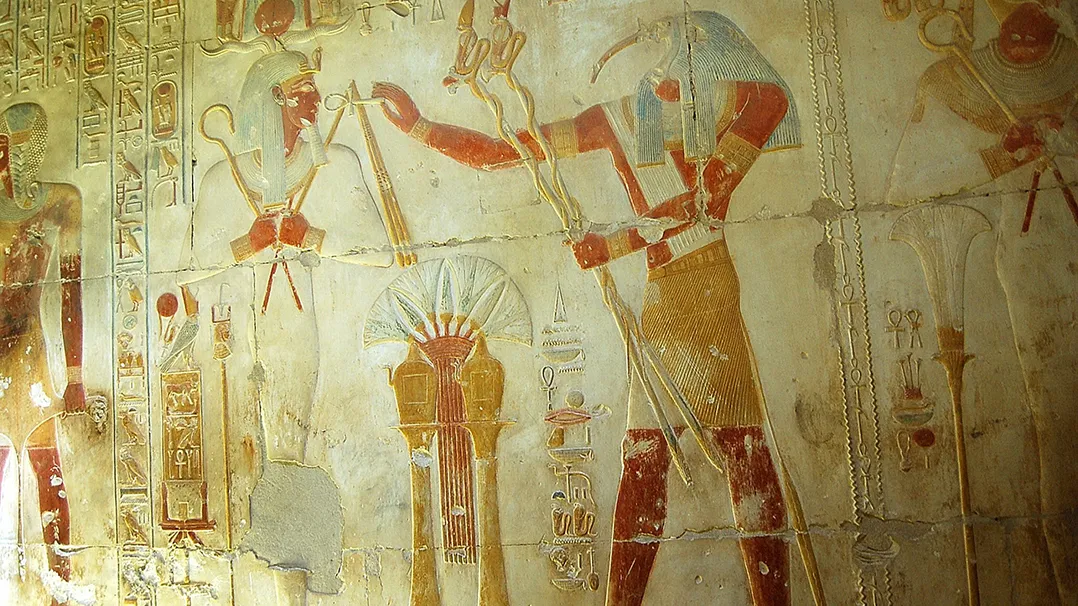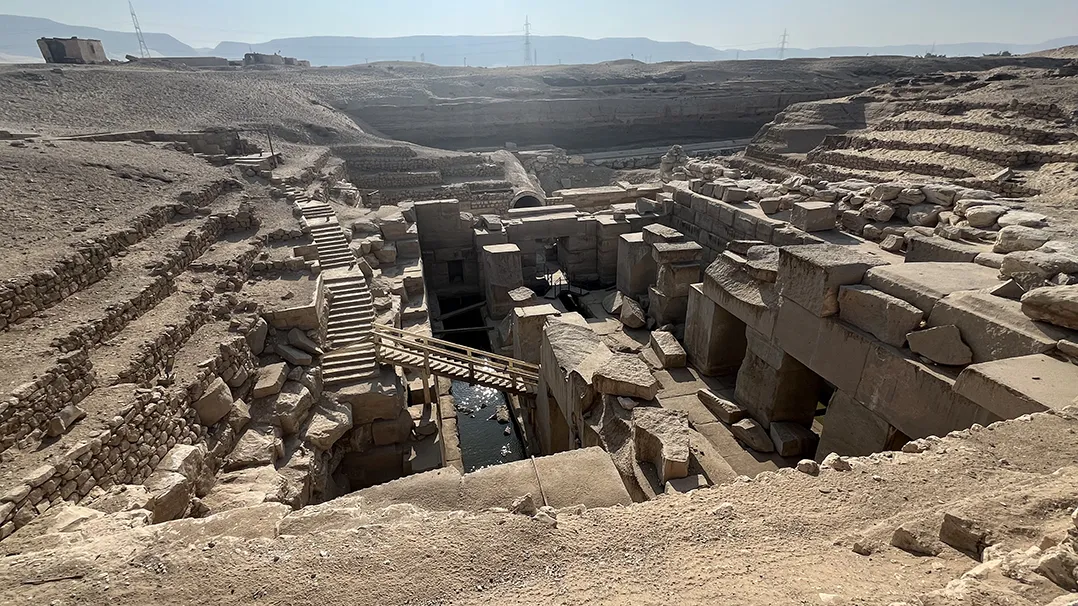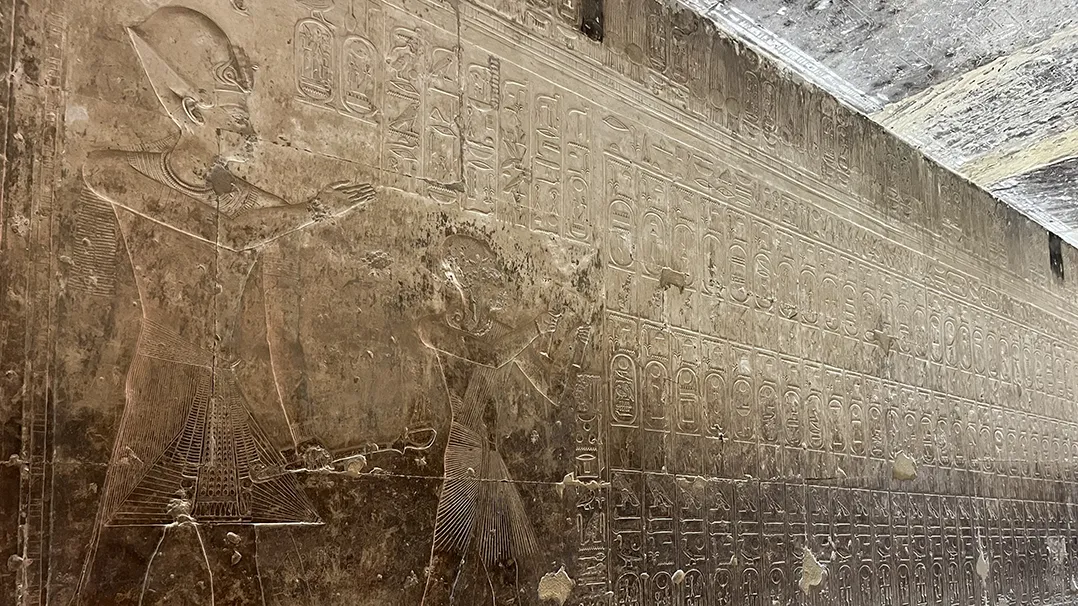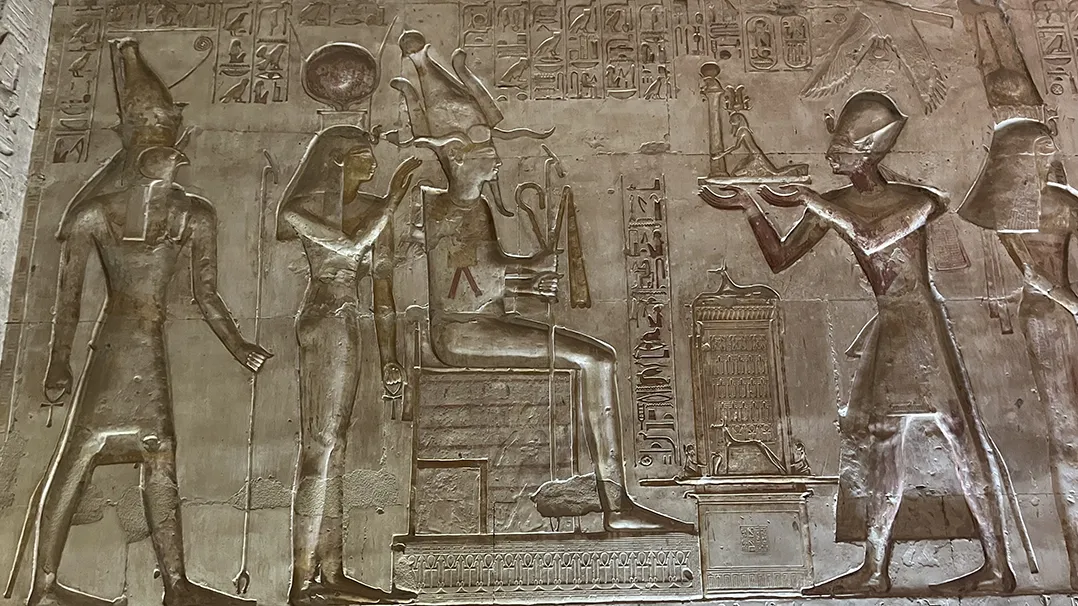As we continue our tour of Egypt, we visit Abydos, one of the country’s most important archeological sites.
Located 7 miles west of the Nile River about 109 miles north of Luxor, Abydos was the burial site of Egyptian pharaohs beginning in about 3000 B.C. Later pharaohs built temples in the area to honor themselves and these earlier rulers. Abydos is most famous today for the extraordinarily well-preserved memorial temple begun by Pharaoh Seti I, who ruled Egypt from 1294 to 1279 B.C. Artists decorated the temple walls with colorful scenes carved in positive bas relief, many showing pharaohs and gods. A famous scene illustrates the miraculous resurrection of Osiris, who became god of the afterlife, after he had been killed by his evil brother Set. Another scene shows Seti I offering gifts to Osiris, Isis and Horus, the most important divine triad at the time. Osiris is depicted with a curved beard reflecting his physical death. Isis, his sister/wife, is crowned with the sun disk. Horus, their falcon-faced son, holds a cross-shaped ankh, the key of life. These and similar images influenced Christian images. Seti also constructed the Osireion, an underground shrine outside his temple honoring the god Osiris, representing either his birthplace or his tomb.
After the death of Seti I, construction of the temple was continued by his son, Ramses II, often considered the pharaoh of the Jewish exodus from Egypt. Ramses added scenes showing his own physical prowess and, like his father, offering gifts to Osiris, Isis and Horus, but the relief is the less impressive negative image. The Abydos temple begun by Seti I is also famous for its unique list of 76 pharaohs, beginning with Narmer, the pharaoh who united Egypt, and ending with Seti I. Missing from the list are the female Hatshepsut and the short-lived Tutankhamen.







